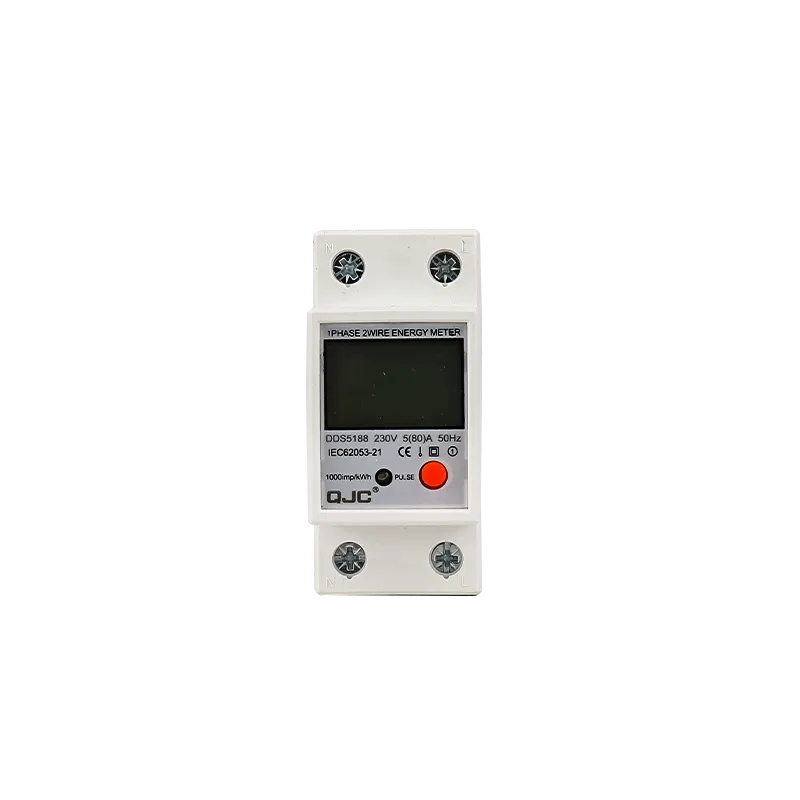Explore the ratings, advantages, and disadvantages of single-phase digital energy meters, vital for efficient electricity management.
What is a single-phase digital energy meter?
A single-phase digital energy meter is a device used to measure the electric energy consumed in a single-phase circuit. It uses electronic technology and digital signal processing technology to measure and record electric energy data in real time.
Single-phase digital energy meters are usually composed of components such as current transformers, processors, power converters, modems, internal batteries, operating interfaces, Hall effect sensors, and anti-cover switches.
Compared with traditional electromechanical energy meters, single-phase digital energy meters have higher accuracy and reliability. It can accurately measure electric energy consumption and provide real-time electricity consumption data feedback.
Ratings of single-phase digital energy meters
The rating of a single-phase digital energy meter refers to the maximum voltage, current and power limits of the meter under normal operating conditions. These ratings ensure the safe and accurate operation of the meter.
Common single-phase digital energy meter ratings include:
- Rated voltage: 220V or 230V
- Rated current: 5A, 10A, 20A, 50A, etc.
- Rated power: 1.1kW, 2.2kW, 5.5kW, etc.
- Accuracy level: Class 1 or Class 2
When selecting a single-phase digital energy meter, it is necessary to select the appropriate rating based on the actual power demand and the parameters of the electrical system. The meter rating must match the connected circuit to ensure safe and reliable operation.
Advantages
- High precision: Single-phase digital energy meters use electronic technology, with higher measurement accuracy, and can more accurately measure and record energy data.
- Good stability: Using digital technology, it is not easily affected by factors such as ambient temperature and humidity, and has better stability.
- Simple installation: Compared with three-phase energy meters, single-phase digital energy meters are easier to install and require fewer wiring and components.
- High cost performance: The price is usually lower than that of three-phase energy meters, and it is more suitable for residential and small commercial applications.
- Multi-function: It can integrate anti-theft, prepayment and other functions to achieve multi-rate and multi-period metering.
- Remote meter reading: Single-phase digital energy meters can realize remote meter reading and data transmission through communication networks such as GPRS and Ethernet.

Disadvantage
- Limited Capacity: Single phases are not suitable for high power applications as they have limited ability to handle high current loads.
- Possible Failure: If voltage fluctuations occur, the energy meter may show false readings.
- May not receive signals in rural areas: In remote areas, it may not receive communication signals.
- Higher Price: Single phase digital energy meters may cost more compared to analog energy meters.
What is the difference between three-phase meters and single-phase meters?
- Application: Single-phase meters are suitable for residential and small commercial applications, while three-phase meters are suitable for industrial and large commercial facilities.
- Wiring: Single-phase meters have only one live and one neutral wire, while three-phase meters have three separate AC circuits.
- Capacity: Three-phase meters can handle larger power loads, while single-phase meters have limited capacity.
- Accuracy: Three-phase systems provide a more balanced load distribution, so three-phase meters give more accurate readings.
- Cost: Three-phase meters are generally more expensive than single-phase meters.
- Installation complexity: The installation of three-phase meters involves more components and wiring, and usually requires a professional.

FAQs
Q1: What does “single-phase” mean in the context of digital energy meters?
A1: In electrical terminology, “single-phase” refers to a system that distributes electricity using one hot wire and one neutral wire. It measures power in residential and small commercial systems.
Q2:What are the common faults ?
A2:Common field faults of single-phase digital energy meters mainly include battery undervoltage, power failure, inaccurate measurement, abnormal power, clock error, communication failure, display failure, trip/closing failure, appearance failure, etc.
Q3;How to deal with a single-phase digital energy meter after a power outage?
A3:If several buildings or the entire street are out of power, it may be a planned power outage or a main line failure; if some users in a building are out of power, it may be a transformer lead phase failure; if only one household is out of power, the neighbor’s power supply is normal, if it is not a delayed power outage, it may be a line fault at home that needs to be checked.
Q4:Why does the electricity bill increase after the single-phase digital energy meter is replaced?
A4: Reasons include: new meter’s accuracy, solved low voltage issues.increased consumption; meter reading delays; old meter wear slows readings; detects small current loads.

